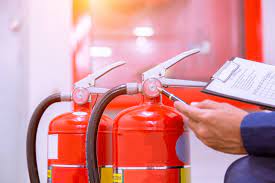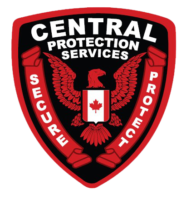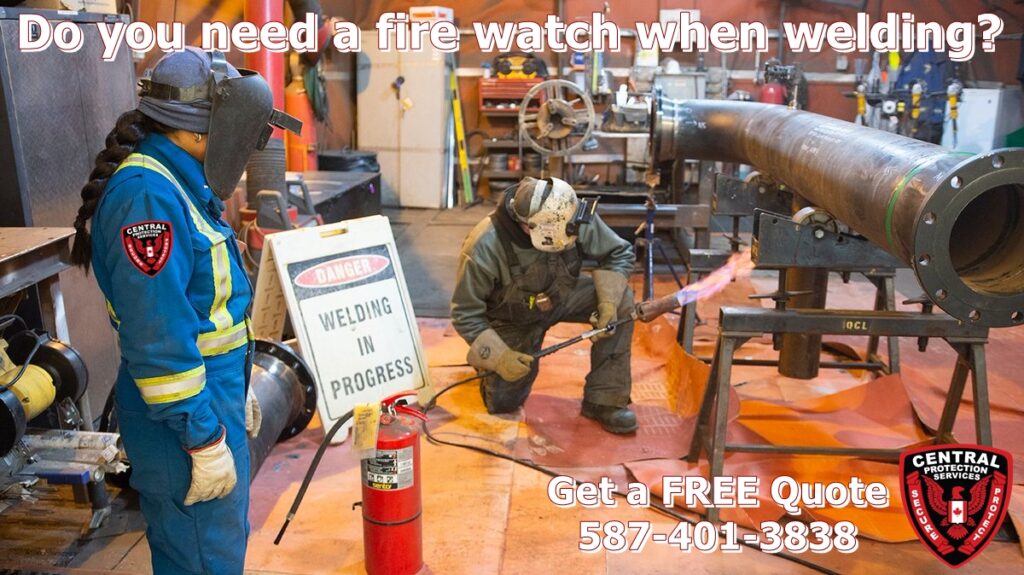The fire watch should be stationed near the work area, with the ability to detect and prevent. Any stray sparks, slag, or heat sources from starting a fire. Because they will tell workers in the near vicinity of a fire and alert emergency fire professionals. If a fire starts to go out of control, need a fire watch should be regarded a key aspect of the fire warning system. A fire watch’s main responsibilities include. During a fire watch, make sure that firefighting equipment is readily available and ready to use. When feasible, keep the immediate area around the hot work clear of combustible materials within a 35-foot radius. Keep an eye out for fires and sparks, slag, or other heat sources that could cause a fire. Communicate with employees and alert them if certain tasks pose an elevated danger of fire.
Any tiny or incipient fires should be put out right away
Stay in the area during the job and for at least 30 minutes after completing the work to ensure that no smoldering materials remain in any location where hot work was performed. Workers assigned to fire watch duty must have fire-extinguishing equipment on hand for the many types of fires they may encounter. If combustible metals, electricity, or oils or grease are present in the work area, the fire extinguisher class must match the type of fire. The Fire Watch should be taught how to use fire extinguishing equipment. Fire watchers should always be aware of the work environment, exit routes. And any changes or obstructions that could obstruct a safe evacuation. The fire watch should be vigilant in looking for hidden fire hazards. Particularly in storage places, crawl spaces, and hidden spots where work could have thrown sparks or slag.
Designated fire watchers must be aware of the location
The manual fire alarm stations and be familiar with the necessary procedures for responding to fires and sounding alarms. Fire watch staff must be familiar enough with the job site, structure, and location to be able to give accurate directions and information to the fire department in the event of a fire. Prior to beginning the hot work, fire watch personnel should inspect the task site. To ensure safety, workers must remove, cover, or protect all flammable materials with fire-resistant coverings before starting any hot work such as welding, cutting, or heating near walls, upper floors, ceilings, or other structural separators. In such cases, a fire watch may be necessary on the opposite side of the partition, as sparks or heat transfer could pose a fire hazard.

Several fists
The fire watch must be familiar with all emergency switches, electrical shut-off mechanisms, and main power cut-offs, as well as the shut-off points for gas, oil, process water, and any other sources that could pose a hazard to employees or fuel a potential fire. The fire watch should only attempt to put out a fire if it is within their training and fire-fighting equipment’s capabilities. The membership is incredibly affordable, and it never goes up in price, no matter how many employees you have or how many excellent safety topics you use. Your membership includes access to hundreds of safety themes that you can use in safety meetings, toolbox talks, and safety moments. Take a look at our website to find out more about what a subscription entails. To discover more, simply click the link below.
What is the Purpose of a Fire Watch?
If a fire breaks out, the fire watch responds quickly. They are the ones who are in charge of raising the alarm. They’ll stick to protocol while also attempting to put out the fire. That alert is, in fact, their principal responsibility. Firefighters should arrive as quickly as possible. As a result, the alarm is crucial. Professionals on the scene can save buildings, machinery, and people through their timely intervention.
Today, take advantage of Safety by Design’s Houston safety training services. We can make sure your team is ready for everything that comes their way. They will feel secure in their abilities to perform accurately and quickly in the event of an emergency if they have received proper training.
Procedures for Fire Watch
You’ll want to stick to approved fire safety standards. Examine all codes thoroughly for details once again. Here’s a quick rundown. All hot work in your facility should be monitored. Beyond that, keep an eye out for fire hazards across the workplace. If a fire hazard is discovered without a fire watch, shut down all operations. Carefully read your safety permit. Make certain that all conditions and standards are met. Make sure combustible materials don’t come into contact with the ignition sources. In the event of a fire, activate the fire alarm right away. If at all possible, put out the fire. You may have a separate emergency alarm number in some instances.






